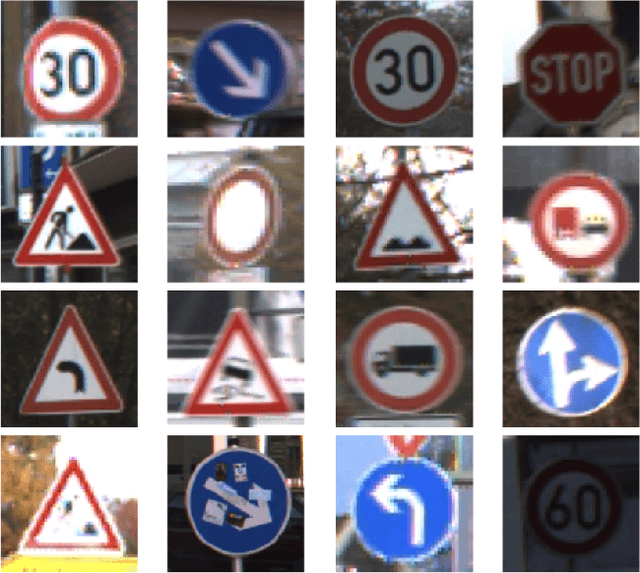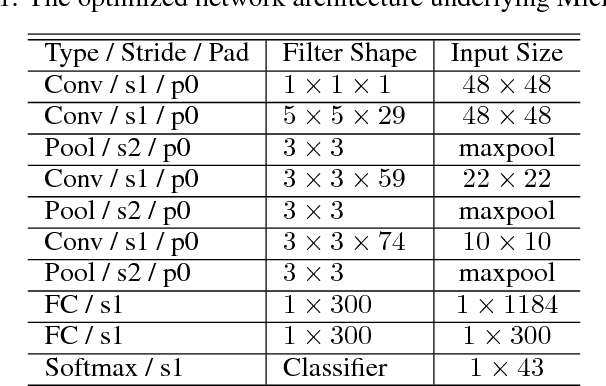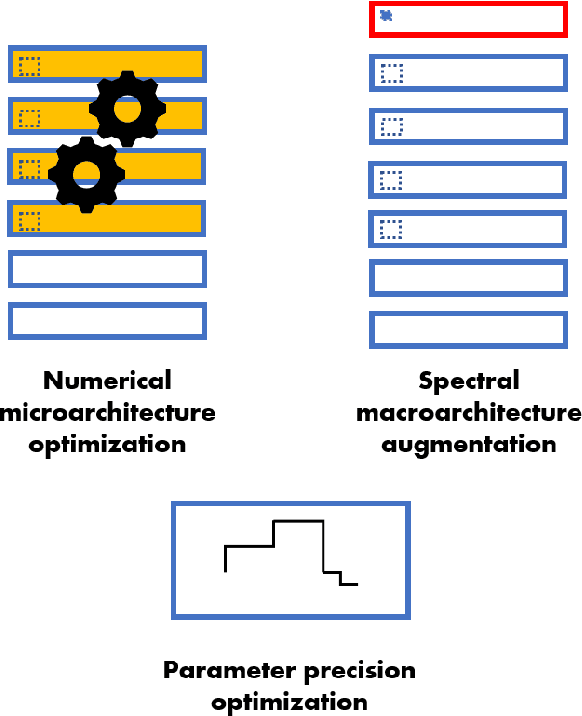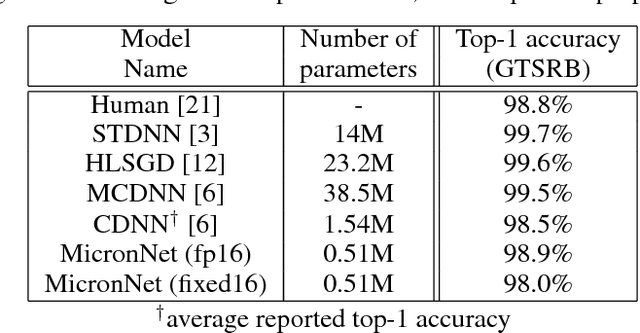MicronNet: A Highly Compact Deep Convolutional Neural Network Architecture for Real-time Embedded Traffic Sign Classification
Paper and Code
Oct 03, 2018



Traffic sign recognition is a very important computer vision task for a number of real-world applications such as intelligent transportation surveillance and analysis. While deep neural networks have been demonstrated in recent years to provide state-of-the-art performance traffic sign recognition, a key challenge for enabling the widespread deployment of deep neural networks for embedded traffic sign recognition is the high computational and memory requirements of such networks. As a consequence, there are significant benefits in investigating compact deep neural network architectures for traffic sign recognition that are better suited for embedded devices. In this paper, we introduce MicronNet, a highly compact deep convolutional neural network for real-time embedded traffic sign recognition designed based on macroarchitecture design principles (e.g., spectral macroarchitecture augmentation, parameter precision optimization, etc.) as well as numerical microarchitecture optimization strategies. The resulting overall architecture of MicronNet is thus designed with as few parameters and computations as possible while maintaining recognition performance, leading to optimized information density of the proposed network. The resulting MicronNet possesses a model size of just ~1MB and ~510,000 parameters (~27x fewer parameters than state-of-the-art) while still achieving a human performance level top-1 accuracy of 98.9% on the German traffic sign recognition benchmark. Furthermore, MicronNet requires just ~10 million multiply-accumulate operations to perform inference, and has a time-to-compute of just 32.19 ms on a Cortex-A53 high efficiency processor. These experimental results show that highly compact, optimized deep neural network architectures can be designed for real-time traffic sign recognition that are well-suited for embedded scenarios.
 Add to Chrome
Add to Chrome Add to Firefox
Add to Firefox Add to Edge
Add to Edge